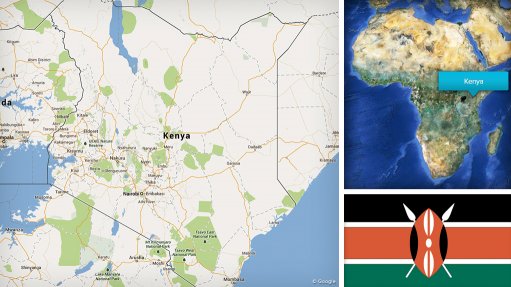Offshore wind farms a potential energy source


WATER MEETS ENERGY Offshore wind farms create and allow for higher wind speeds which allows for an increase in capacity generation
Offshore wind farms have received less attention in the transition to net zero, primarily owing to technology barriers linked to higher capital costs and the lesser adoption of the technology, says University of Pretoria (UP) former master’s student and current engineering unit manager Sibusiso Nozakuzaku, who conducted a study on the feasibility of offshore wind farms.
These challenges are observed globally, and are not specific to South Africa, adds UP sustainable management senior lecturer Dr George Alex Thopil, who was Nozakuzaku’s supervisor.
Offshore wind farms can provide South Africa with a good energy mix and can be used to supply power to coastal regions where the resource is abundant. Transitioning from dependence on fossil fuels requires diversification, Nozakuzaku says.
A study, ‘Offshore Wind Resource Assessment Off the South African Coastline’, conducted by Freddie Inamboa and Kumaresan Cunden in 2019, assessed wind speed along the South African coastline and found four potential offshore sites with suitable resource availability for wind farms.
Site 1 is located about 200 km off the eastern coast of the Durban harbour, in KwaZulu-Natal; site 2 is located about 300 km south of Gqeberha, in the Eastern Cape province; site 3 is located about 290 km south of Cape Town, in the Western Cape; and site 4 is located about 570 km northwest of Saldanha Bay, also in the Western Cape.
Nozakuzaku decided to expand on the 2019 study by investigating the potential of the South African sites within the context of technical and environmental factors, and comparing the four sites with offshore wind farms in the UK the 1 218 MW Hornsea 1, in Yorkshire and China the 400 MW SPIC Binhai North H2, near Zhuhai in Guangdong province, which were the sites with the largest installed capacity in Europe and Asia last year.
Experts in the wind sector, based in the UK and South Africa, were asked to rate the seven technical and environmental factors which influence the choice of site for offshore wind farms.
Technical factors that were used for the comparison of sites included wind resources, the installation area, transmission distance and sea depth, while environmental factors included marine traffic, weather influence and tropical-cyclone influence.
Nozakuzaku says the highlight of the results is that two South African sites ranked higher than the Binhai North H2 wind farm in China, but lower than Hornsea 1 in the UK.
Nozakuzaku assessed the potential power output of all South African sites using a Siemens SWT-4.0-130 wind turbine. The maximum potential output achievable from site 2 was about 748 GW, with the feasible area for site 2 covering 79 000 km2.
Nozakuzaku says while site 2 is large, developing just 1% of the area still provides a potential 7.5 GW of energy, while site 1 covers a smaller area of 21 000 km2 , translating to 2 GW at 1% site development.
Further, Thopil says the main challenge when creating offshore wind farms is the harsh environment.
Large turbines have to be erected onto stable platforms, electricity has to be transmitted over large distances using undersea cables, which can lead to higher transmission losses, and installation and maintenance have to be conducted in harsher environments, compared to those associated with other energy technologies, he explains.
However, Nozakuzaku adds that the advantage of developing offshore wind farms is that the wind speeds are higher than other energy technologies, which allows for an increase in capacity generation.
Further, offshore wind turbines are relatively bigger than onshore wind turbines, as there is more space and wind in the ocean.
However, Thopil says a different type of maintenance regime is required to mitigate the effects of corrosion.
Nozakuzaku and Thopil conclude that the results overwhelmingly highlight not only the theoretical potential of offshore wind power in South Africa but also the positive industry sentiments towards the technology.
Additional investigations are required to assess techno-economics and environmental impact assessments of the technology, says Thopil.
The study was selected as the best ‘master’s in project management’ research project completed last year at the Graduate School of Technology Management. The study will be published in an international journal in the field of energy.
Comments
Announcements
What's On
Subscribe to improve your user experience...
Option 1 (equivalent of R125 a month):
Receive a weekly copy of Creamer Media's Engineering News & Mining Weekly magazine
(print copy for those in South Africa and e-magazine for those outside of South Africa)
Receive daily email newsletters
Access to full search results
Access archive of magazine back copies
Access to Projects in Progress
Access to ONE Research Report of your choice in PDF format
Option 2 (equivalent of R375 a month):
All benefits from Option 1
PLUS
Access to Creamer Media's Research Channel Africa for ALL Research Reports, in PDF format, on various industrial and mining sectors
including Electricity; Water; Energy Transition; Hydrogen; Roads, Rail and Ports; Coal; Gold; Platinum; Battery Metals; etc.
Already a subscriber?
Forgotten your password?
Receive weekly copy of Creamer Media's Engineering News & Mining Weekly magazine (print copy for those in South Africa and e-magazine for those outside of South Africa)
➕
Recieve daily email newsletters
➕
Access to full search results
➕
Access archive of magazine back copies
➕
Access to Projects in Progress
➕
Access to ONE Research Report of your choice in PDF format
RESEARCH CHANNEL AFRICA
R4500 (equivalent of R375 a month)
SUBSCRIBEAll benefits from Option 1
➕
Access to Creamer Media's Research Channel Africa for ALL Research Reports on various industrial and mining sectors, in PDF format, including on:
Electricity
➕
Water
➕
Energy Transition
➕
Hydrogen
➕
Roads, Rail and Ports
➕
Coal
➕
Gold
➕
Platinum
➕
Battery Metals
➕
etc.
Receive all benefits from Option 1 or Option 2 delivered to numerous people at your company
➕
Multiple User names and Passwords for simultaneous log-ins
➕
Intranet integration access to all in your organisation

















